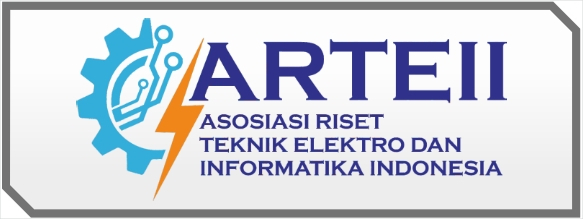Pengaruh Digital Marketing Terhadap Kinerja Perusahaan : Review Literatur Sistematik
Abstract
In modern marketing in the digital era, companies must adapt to rapidly developing technological changes. Consumers can get information more quickly via the internet. Companies that are able to provide information more quickly via digital have an easier time winning the competition. Digital marketing has recently been able to influence consumer behavior and company performance. There are several different studies and discussions about the influence of digital marketing. with companies. Therefore, the aim of this article is to provide a more concrete picture of the influence of digital marketing on company performance through a systematic literature review of 1200 articles. Consisting of 200 Scopus indexed publication articles and 1000 articles via Google Scholar. Of these 1200 articles We selected those that had the same topic regarding digital marketing. Then we selected again at least 20 quotes. Then we selected again the 20 most relevant published articles from 2012 to 2023. The findings show that in general digital marketing has an impact on company performance.
References
[2] A. Pandey, “Social media marketing impact on the purchase intention of millennials,” Int. J. Bus. Inf. Syst., vol. 28, no. 2, pp. 147–162, 2018, doi: 10.1504/IJBIS.2018.091861.
[3] M. S. Hidayat and Budi Utami, “Three Years Journal of IJSTM (International Journal of Science Technology & Management: Inarah): A Bibliometric Analysis,” Int. J. Sci. Technol. Manag., vol. 3, no. 1, pp. 167–178, 2022, doi: 10.46729/ijstm.v3i1.431.
[4] N. A. B. Zamri, R. Abdul Rahim, and N. B. Norizan, “The Effectiveness of Digital Marketing Towards SMEs: A Systematic Literature Review,” Adv. Soc. Sci. Res. J., vol. 11, no. 2.2, pp. 78–94, 2024, doi: 10.14738/assrj.112.2.16427.
[5] N. K. Wardati and M. Er, “The impact of social media usage on the sales process in small and medium enterprises (SMEs): A systematic literature review,” Procedia Comput. Sci., vol. 161, pp. 976–983, 2019, doi: 10.1016/j.procs.2019.11.207.
[6] Dave Chaffey and Fiona Ellis-Chadwick, Digital Marketing, Sixth. UnitedKingdom: Pearson Education Limited, 2016.
[7] E. Tariq, M. Alshurideh, I. Akour, and S. Al-Hawary, “The effect of digital marketing capabilities on organizational ambidexterity of the information technology sector,” Int. J. Data Netw. Sci., vol. 6, no. 2, pp. 401–408, 2022, doi: 10.5267/j.ijdns.2021.12.014.
[8] D. Chaffey, “What is Digital Marketing? A visual summary,” Smart Insights, 2019.
[9] N. K. Wardati, “The impact of social media usage on the sales process in small and medium enterprises (SMEs): A systematic literature review,” Procedia Computer Science, vol. 161. pp. 976–983, 2019. doi: 10.1016/j.procs.2019.11.207.
[10] A. A. Sheikh, N. A. Rana, A. Inam, A. Shahzad, and H. M. Awan, “Is e-marketing a source of sustainable business performance? Predicting the role of top management support with various interaction factors,” Cogent Bus. Manag., vol. 5, no. 1, pp. 1–22, 2018, doi: 10.1080/23311975.2018.1516487.
[11] Haudi et al., “The role of e-marketing and e-crm on e-loyalty of indonesian companies during covid pandemic and digital era,” Uncertain Supply Chain Manag., vol. 10, no. 1, pp. 217–224, 2022, doi: 10.5267/j.uscm.2021.9.006.
[12] C. Homburg and D. M. Wielgos, “The value relevance of digital marketing capabilities to firm performance,” J. Acad. Mark. Sci., vol. 50, no. 4, pp. 666–688, 2022, doi: 10.1007/s11747-022-00858-7.
[13] I. Daud et al., “The effect of digital marketing, digital finance and digital payment on finance performance of indonesian smes,” Int. J. Data Netw. Sci., vol. 6, no. 1, pp. 37–44, 2022, doi: 10.5267/J.IJDNS.2021.10.006.
[14] E. H. Manser Payne, A. J. Dahl, and J. Peltier, “Digital servitization value co-creation framework for AI services: a research agenda for digital transformation in financial service ecosystems,” J. Res. Interact. Mark., vol. 15, no. 2, pp. 200–222, 2021, doi: 10.1108/JRIM-12-2020-0252.
[15] S. P. K. Goldman, H. van Herk, T. Verhagen, and J. W. J. Weltevreden, “Strategic orientations and digital marketing tactics in cross-border e-commerce: Comparing developed and emerging markets,” Int. Small Bus. J. Res. Entrep., vol. 39, no. 4, pp. 350–371, 2021, doi: 10.1177/0266242620962658.
[16] A. Djakasaputra, O. Y. A. Wijaya, A. S. Utama, C. Yohana, B. Romadhoni, and M. Fahlevi, “Empirical study of indonesian SMEs sales performance in digital era: The role of quality service and digital marketing,” Int. J. Data Netw. Sci., vol. 5, no. 3, pp. 303–310, 2021, doi: 10.5267/j.ijdns.2021.6.003.
[17] T. Sariwulan, S. Suparno, D. Disman, E. Ahman, and S. Suwatno, “Entrepreneurial Performance: The Role of Literacy and Skills,” J. Asian Financ. Econ. Bus., 2020, doi: 10.13106/jafeb.2020.vol7.no11.269.
[18] M. Cheng, J. Liu, J. Qi, and F. Wan, “Differential effects of firm generated content on consumer digital engagement and firm performance: An outside-in perspective,” Ind. Mark. Manag., vol. 98, no. April, pp. 41–58, 2021, doi: 10.1016/j.indmarman.2021.07.001.
[19] Y. Eremina, N. Lace, and J. Bistrova, “Digital maturity and corporate performance: The case of the Baltic states,” J. Open Innov. Technol. Mark. Complex., vol. 5, no. 3, 2019, doi: 10.3390/joitmc5030054.
[20] V. Scuotto, “The effect of social networking sites and absorptive capacity on SMES’ innovation performance,” J. Technol. Transf., vol. 42, no. 2, pp. 409–424, 2017, doi: 10.1007/s10961-016-9517-0.
[21] S. Chatterjee and A. Kumar Kar, “Why do small and medium enterprises use social media marketing and what is the impact: Empirical insights from India,” Int. J. Inf. Manage., vol. 53, no. February, p. 102103, 2020, doi: 10.1016/j.ijinfomgt.2020.102103.
[22] P. De Pelsmacker, S. van Tilburg, and C. Holthof, “Digital marketing strategies, online reviews and hotel performance,” Int. J. Hosp. Manag., vol. 72, no. July 2017, pp. 47–55, 2018, doi: 10.1016/j.ijhm.2018.01.003.
[23] C. I. Mbama and P. O. Ezepue, “Digital banking, customer experience and bank financial performance: UK customers’ perceptions,” Int. J. Bank Mark., vol. 36, no. 2, pp. 230–255, 2018, doi: 10.1108/IJBM-11-2016-0181.
[24] G. Yoon, C. Li, Y. (Grace) Ji, M. North, C. Hong, and J. Liu, “Attracting Comments: Digital Engagement Metrics on Facebook and Financial Performance,” J. Advert., vol. 47, no. 1, pp. 24–37, 2018, doi: 10.1080/00913367.2017.1405753.
[25] W. L. Lin, N. Yip, J. A. Ho, and M. Sambasivan, “The adoption of technological innovations in a B2B context and its impact on firm performance: An ethical leadership perspective,” Ind. Mark. Manag., vol. 89, no. May 2019, pp. 61–71, 2020, doi: 10.1016/j.indmarman.2019.12.009.
[26] B. Melović, M. Jocović, M. Dabić, T. B. Vulić, and B. Dudic, “The impact of digital transformation and digital marketing on the brand promotion, positioning and electronic business in Montenegro,” Technol. Soc., vol. 63, p. 101425, 2020, doi: 10.1016/j.techsoc.2020.101425.
[27] G. Aydin, “Social media engagement and organic post effectiveness: A roadmap for increasing the effectiveness of social media use in hospitality industry,” J. Hosp. Mark. Manag., vol. 29, no. 1, pp. 1–21, 2020, doi: 10.1080/19368623.2019.1588824.
[28] F. Wang, “Digital marketing capabilities in international firms: a relational perspective,” Int. Mark. Rev., vol. 37, no. 3, pp. 559–577, 2020, doi: 10.1108/IMR-04-2018-0128.
Copyright (c) 2024 Mohamad Syamsul Hidayat

This work is licensed under a Creative Commons Attribution 4.0 International License.













